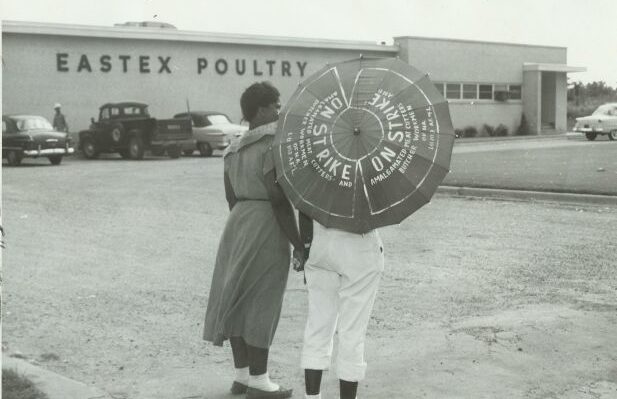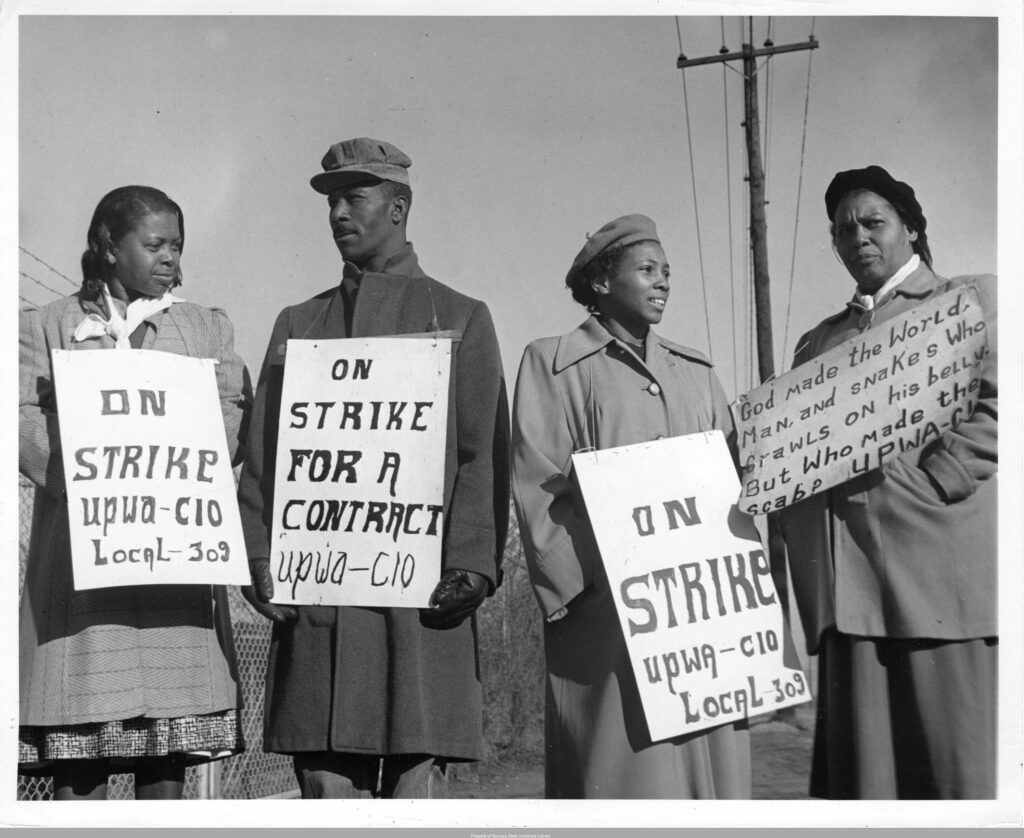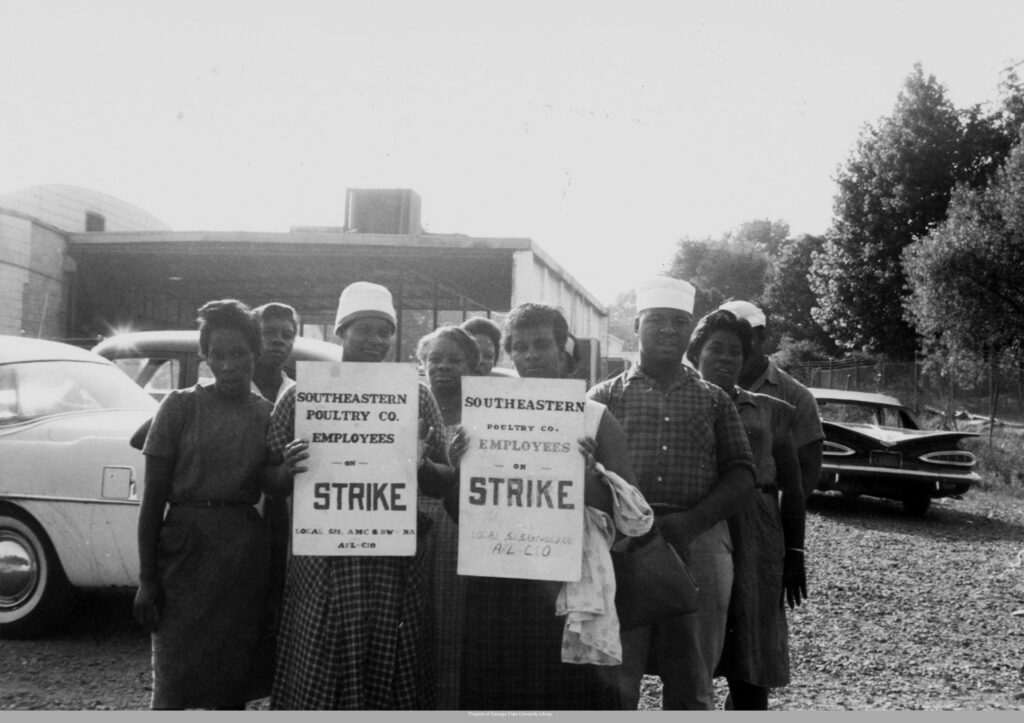February is Black History Month and this year’s theme, “African Americans and the Arts”, highlights the artistic influence woven through the field of written, visual and performing arts, from both a historic and modern perspective.
In the labor movement, picket signs play a crucial role in messaging and mobilization – the creation of these signs and the act of striking is an artform within itself. Many signs made for and by Black workers have stood the test of time and visually mark some of the most historically recognizable picket lines.
Read on to view some examples of this artform and the history that accompanies it.
The Texas “Sick Chicken” Strike

In 1953, Clara Holder, an employee at the Eastex Poultry plant in Center, Texas, wrote to the Amalgamated Meat Cutters (later evolving into the UFCW), seeking their assistance in unionizing her workplace. The majority of workers, predominantly Black women, faced unsanitary working conditions, unpaid mandatory overtime, and endured chronic health issues stemming from the demanding environment.
Faced with uncooperative plant management, the Amalgamated Meat Cutters initiated a national boycott of Eastex Poultry products. Simultaneously, in the spring of 1954, workers staged a collective walkout. This multipronged pressure campaign proved effective, compelling the company to return to the negotiating table after an 11-month strike. The resulting agreement included wage increases, paid holidays, and improved job security, marking a significant triumph for the workers (East Texas Historical Journal).
Two of these workers, pictured above, chose to utilize an umbrella bearing the message “On Strike,” to catch passerby’s eyes and protect theirs from the Texas sun.
United Packinghouse Workers Union Local 309
The image above shows four individuals from United Packinghouse Workers Union (which dissolved into the Amalgamated Meat Cutters and later joined the UFCW) Local 309, engaged in a strike against the W.W. Pickle Company (Wisconsin Historical Society).
Lucille Lewis, a woman among the strikers, displayed a picket sign conveying the outrage felt by the workers towards those who crossed their picket lines. Her sign carried the message: “God made the world, man, and snakes who crawl on his belly. But who made the Scab?”
The remaining strikers, from left to right, are Janie B. Harris, Arthur Germany, and Hattie Matthews.
Rose Hill Poultry Company Strike: Meatcutters Union, Local 525, 1962
Throughout much of the 1960s, employees of Rose Hill Poultry, pictured above, fought for improved working conditions in the poultry industry. Engaging in a four-year-long picket line, they faced a bitter battle starting in 1962, which included a lawsuit, along with a prolonged, draining strike.
In the 1960s, the plight of these workers went largely unnoticed outside of Duplin County, N.C., except for support from civil rights groups and Local 525 of the Amalgamated Meat Cutters, which later became the UFCW.
Sadly, the Rose Hill poultry workers’ side of the story remained largely untold and it took another two decades for any investigation into working conditions in the state’s poultry industry to emerge (David Cecelski).





